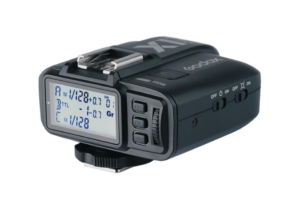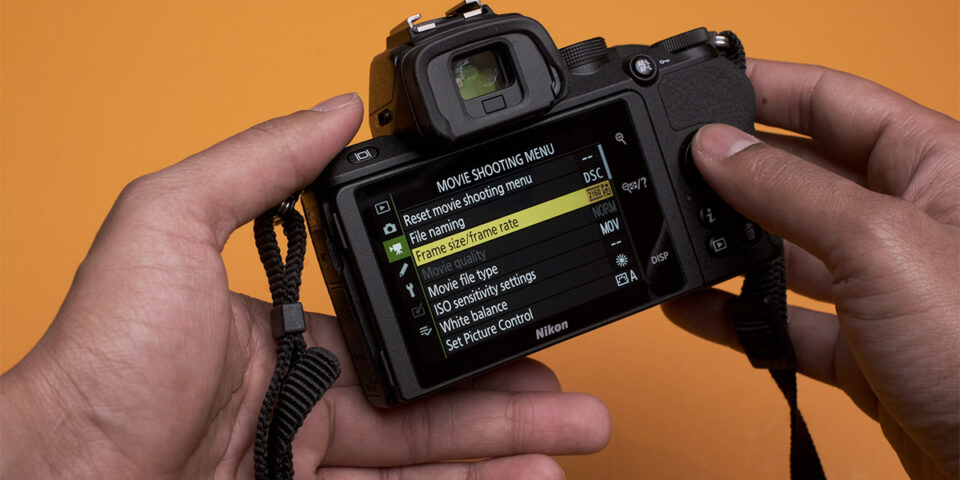As any holiday approaches, the demand for family and children’s portraits for gifts and memories goes sky high. Many families look to get info on their local photographers so they hire the best one available. Oftentimes, if you are the person with a “good camera”, you are called upon to be the photographer making these images. Let’s explore what you need to make nice looking family portraits at home, without spending yourself into a hole.

Background
When you look at professional portraits, one thing is going to stick out if you take the time to see. You’ll see that the background is simple, sometimes completely plain, and if it is not plain, it’s not going to be sharp or have really punchy colours or have a lot of contrast. All these elements draw attention away from the subject of your images. A successful image has only ONE subject, be that a single person, or a family. It’s never a family, plus a tree, plus a fireplace, plus plus plus. That is a confusing and tiring image and is not likely to be particularly successful.
The good news is that you have no need to construct complex scenes with lots of props. In practical terms, a very neutral background is best. A roll paper backdrop is fairly simple, but if you do not have a background stand can be hard to handle, plus for family portraits you are going to need a wide roll and they can be difficult to move around. Muslins also work and can be folded up when you are done. They tend to wrinkle but a hand steamer does a good job. You will still need some way to hang a muslin, and a simple background stand that collapses when you don’t need it is a great piece of kit for the portrait maker.
Whether you go paper or muslin, go for neutral patterns if any and avoid colours as they tend to create an emotional response in the viewer that will be different from person to person. What’s ideal and works in the most places? A medium grey. It may sound boring, but it is the most used background that you will find for indoor shots.
Location
I know that many photographers want to do their shoots outside. They want to use “natural light” or have found the “perfect spot”. Child and particularly family portraits can be an exercise in herding cats and getting everyone to the right place at the right time, with great light and superb weather might prove to be impossible. Shooting indoors is easier and faster, with a lot less likelihood of rain, mud and snow. Plus, it is a smaller location and easier to control. Regarding the demand for natural light, this is a common misconception amongst people not familiar with simple flash, but the reality is that so called natural light is extremely difficult to manage and control, and this lack of control has a high propensity to breed disaster.
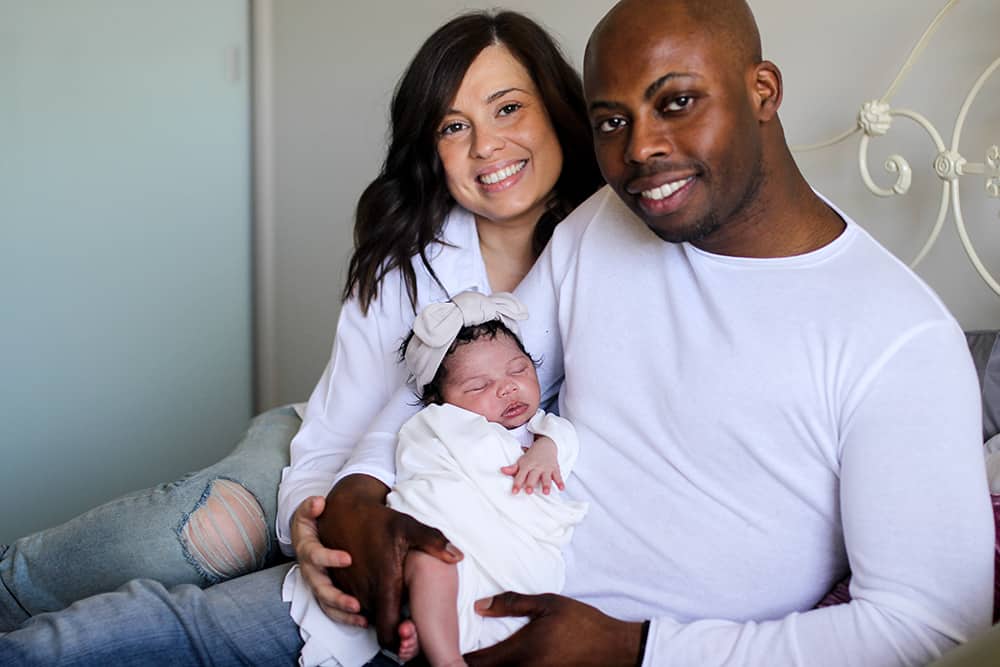
Thus, for your location, you need to find a place where you can get the people you want in your shot in close proximity, preferably a space with light coloured walls and a white ceiling so you get lots of nice fill light without having to light the area like a film set. You want to use your background to remove distracting elements where possible, and to use the minimum depth of field possible to keep the background soft where you cannot use a portable backdrop.
Lighting
Absolutely the easiest and fastest way to light a shot is with a flash. I do not mean the little flash built into your camera, or that miniature thing that came in the box. Accept that for the most part, these things are useless. You will want a more powerful flash that is often called a speed light that mounts to the hotshoe on your camera and speaks your camera’s native language for TTL flash. This flash must have a head that can bounce and swivel because you never want to point the flash directly at your subject. If you have a flash already, great, but if you don’t, I recommend heading in to your local Henry’s store or to Henrys.com and getting a Godox TT685. This flash is available in mounts for all popular camera brands and is well known for doing a great job in TTL. TTL means “through the lens” so the flash exposure is calculated the same way as any “natural light” exposure.
If the ceiling is no more than nine feet high, point the head at the ceiling and midway between the camera and the subject. That’s it. Use your camera in whatever mode that you want, but if in Program or Aperture Preferred mode, be sure to set the minimum flash sync speed to 1/60.
If your ceiling is higher or you are in a room with a coloured ceiling, you will want some kind of light shaper.
The easiest to use is an umbrella because they are very forgiving. You will need an umbrella at least 36″ in diameter, a light stand, and an umbrella bracket. You also need a way to remotely fire your flash and that is incredibly easy with the Godox X1T Radio Transmitter. The flash that I recommended earlier has the receiver built in already.
Godox X1T transmitter. The receiver is built into the TT685 so you do not need to buy a separate one, but if you own a flash and do not have a receiver, get the matching Godox receiver for a complete radio kit.
When it comes to light stands, brackets and umbrellas, you have a lot of choices. If you are going to make a small business out of photography, I would suggest going with Manfrotto stands and umbrella brackets and Westcott or Profoto umbrellas. However, if this is mostly a hobby, you don’t need to spend that extra money and will find that the gear from Cameron will do a great job for you. My recommendation for a light stand is ALWAYS a boom stand so you can get your light both up and over. The Cameron LS-65B is a great stand and will last a long time. The Cameron Umbrella Tilter Bracket includes a cold shoe to hold your flash. At around $40 the Cameron 40″ White/Black Reversible Umbrella is a good choice. The backing comes off so you can use it both as a reflective umbrella and as a shoot-through type giving you more versatility.
The white interior is backed with silver and black for maximum reflectance and the cover comes off if you want to use it as a shoot-through. At 40″ in diameter, this is an excellent all purpose umbrella.
When using an umbrella, that umbrella shaft should be acting like a pointer to about the chin line of your subjects. Umbrellas are very forgiving and you aren’t trying for super dramatic lighting. A good place to start is with the umbrella beside you and higher than the camera and the subjects, at a slight down angle.
Posing
The really hard work is the posing. Have the subjects look at the camera and keep their eyes on the lens. Keep the smiles natural and don’t put hands near the face. This goes for pets too as many family portraits include pets – they are part of the family after all. In this case, an excitable pet might be a problem, just the same as very young children! In fact, you may have to make several shots to get the one that you want. That’s ok, storage is inexpensive. And almost all photo processing software has tools for minor retouching such as blemish removal. Have your subjects push their foreheads towards the lens. This extends the neck and does wonders to reduce double chins and also puts a bit of stretch into the face. It looks completely natural head on. Plus, everyone can do it. You can see the effect in the sample family image that opens this article.
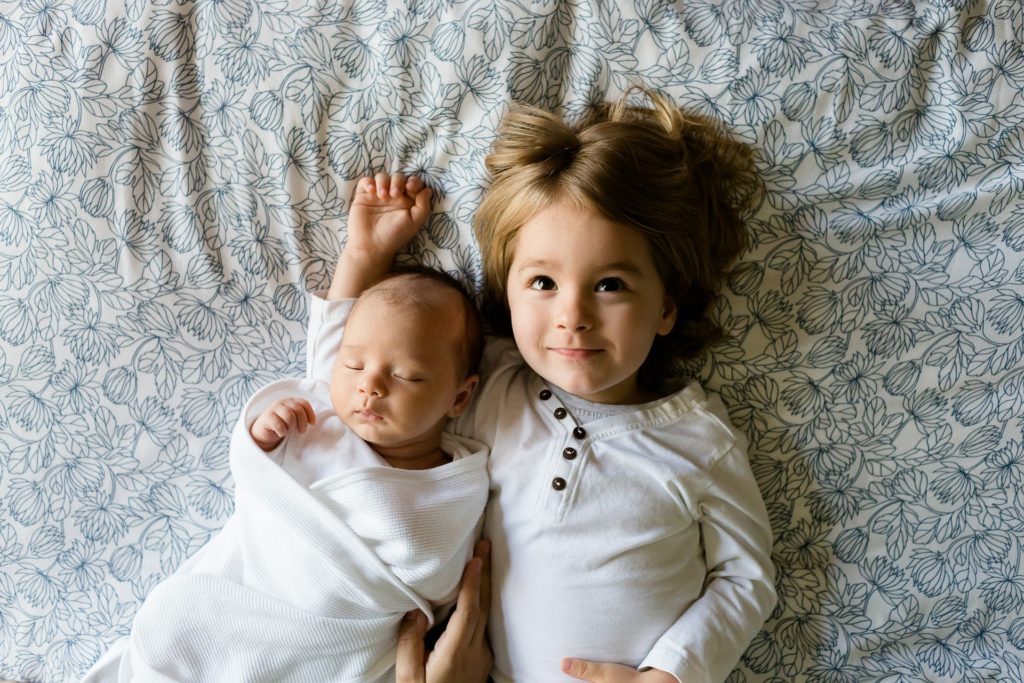
Children on their own or in a family shot can be challenging. They tend to be high energy and don’t like sitting still. Get your shot all set up before making the child ready. Include a pet or a favourite toy to keep the attention on you and always show the child the image from the camera LCD to maintain engagement.
Framing
In every case, fill the frame of your LCD or viewfinder, but also think about the outcome of the shot. Remember that the aspect ratio of our cameras are either 3:2 or 4:3 but that all common enlargement frames are still oriented to 5:4 from a hundred years ago. So, if you know that you will be making prints in 8″x10″ or 11″x14″ or 16″x20″, be sure to allow yourself some space for cropping on the sides to prevent having to cut off something important.
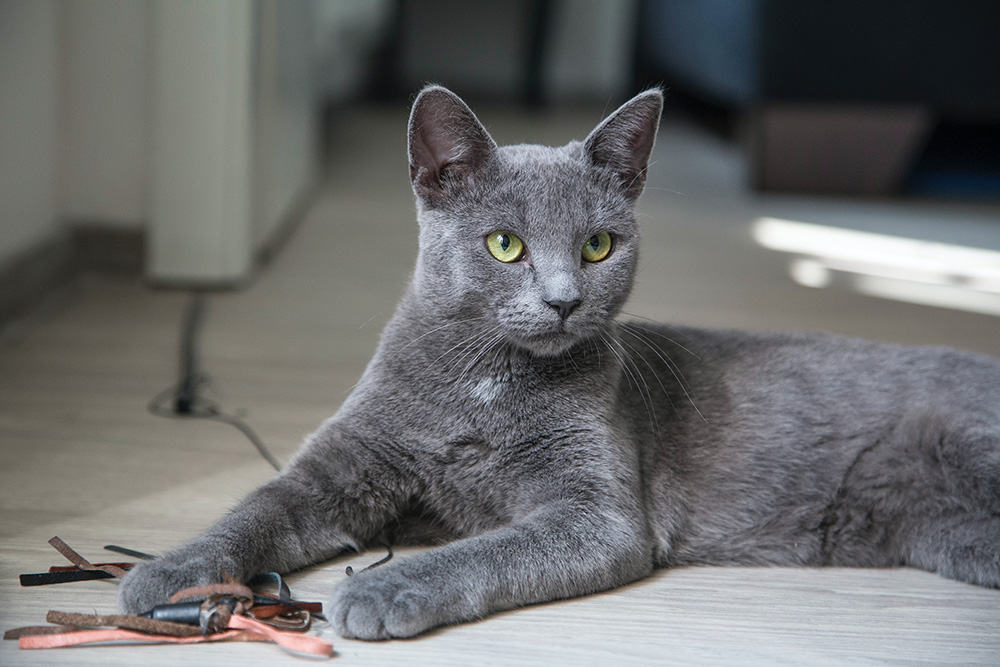
Conclusions
Family and child portraits are easier to do than you might think. With a bit of practice, you will find yourself able to make nice, well-lit images in a reasonable amount of time, with light that you are in complete control over. Don’t forget to have fun with your subjects, such as activities or shots designed to pull their personality forward.
If you have specific questions, you can always ask your Henry’s sales associate. Call a store to speak directly with one of our Henry’s experts or send us a message online via live chat, available 7 days a week.


